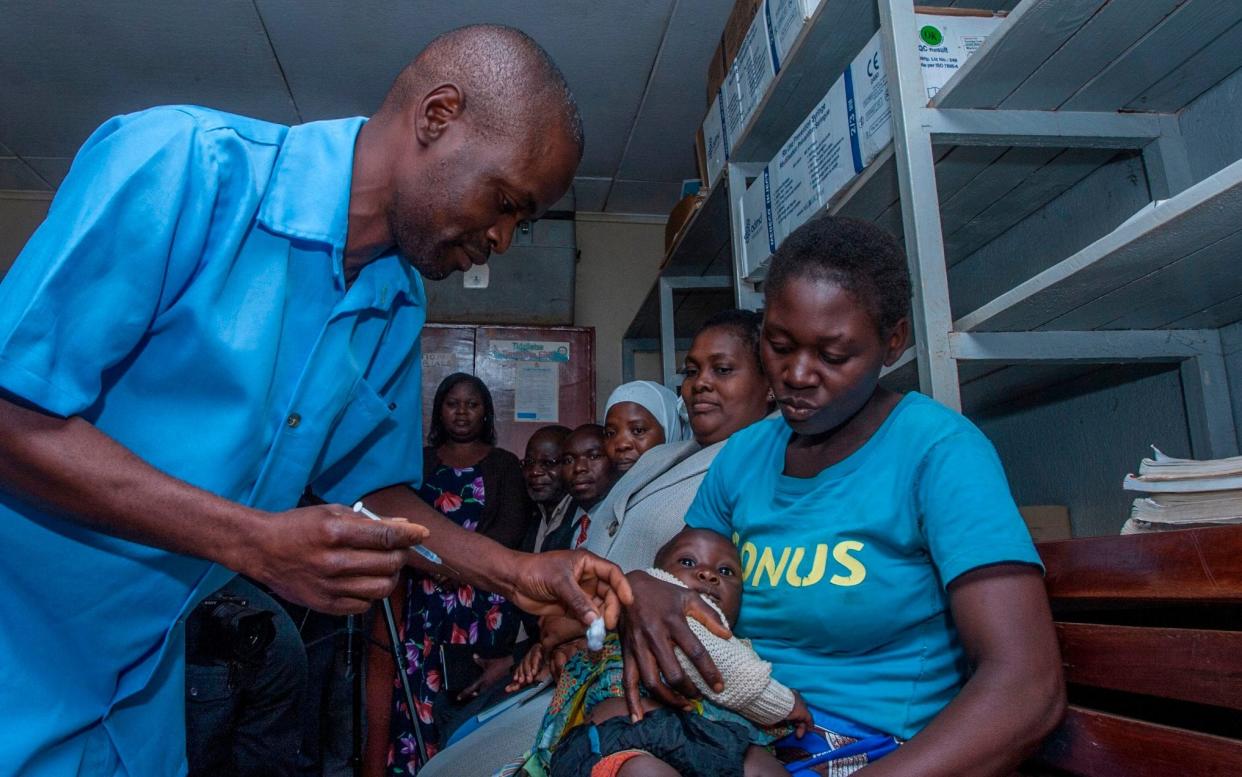Fight to wipe out malaria will fail without new interventions, WHO warns

Efforts to wipe out malaria are unattainable unless new tools to fight the mosquito and parasite are urgently developed, the World Health Organization has warned.
In a major report a panel of 13 experts concluded that even in a best-case scenario, it is an “unavoidable fact” that there would still be 11 million new malaria infections each year in Africa by 2050 – where more than 90 per cent of deaths from the disease currently take place.
Since the millennium, huge strides have been made in the fight against malaria. Infections dropped by 22 per cent between 2000 and 2015, while the number of deaths were cut from 864,000 to 429,000 – a “triumph of modern public health”.
But in recent years progress has stalled, and the number of cases rose by three million to a total of 219 million globally in 2017.
“The world is at a crossroads, the historic progress that has been achieved in the last decade is clearly slowing down,” said Dr Pedro Alonso, director of the WHO Global Malaria Programme. “We need to focus on getting back on track – the malaria situation globally is not a good one.”
The report found that the world would need to invest $34 billion in order to hit the target of reducing the burden of malaria by 90 per cent between 2016 and 2030 – although economies would gain $283 in gross domestic product in return.
But the report stopped short of setting specific targets for the eventual eradication of malaria.

“Eradication is conceptually feasible,” said Dr Marcel Tanner, chair of the expert panel – known as the strategic advisory group on malaria eradication (SAGme). “[But] it is not something we are going to be able to achieve with the tools we have now in the next 30 years.”
Dr Pedro added that setting an unachievable goal was “unhelpful” as it could spark a backlash of defeatism if targets were not met – a situation the world faced after goals to wipe out malaria in the 1970s were not reached.
Instead, he said the report instead outlines the three pillars that “lay the foundation for a future eradication effort”: renewed financial and political commitment; improved data and surveillance; and the development of new drugs, vaccines and mosquito controls.
“It becomes terribly apparent at this point that the imperfect tools we have today can go a long way, they can get us within sight of what could be malaria eradication. But we won’t get there,” Dr Alonso said.
“What we would like to underscore is the need to revitalise a research and development agenda to find the tools that we really need to eradicate malaria.”

This is in part because of rising resistance to insecticides used in bednets among mosquitoes and the malaria parasite’s emerging resistance to antimalarial drugs.
Last month experts found that resistance to multiple antimalarial drugs was spreading “aggressively” in the malaria parasite in south east Asia.
And research studying the parasite’s genome in 15 African countries, published on Thursday inSciencejournal, suggests that resistance could soon emerge independently on the continent.
“This shows that there is the possibility that local resistance can arise – we previously thought that resistance developed in Asia and from there was imported to Africa,” said Prof Abdoulaye Djimdé, fellow at the Wellcome Sanger Institute and chief of the molecular epidemiology and drug resistance unit at the University of Bamako in Mali.
“Resistance in Africa would be terrible… as we already have a high number of deaths from malaria and a great amount of morbidity,” he added.

But Dr Alonso said that while “resistance is a fact,” the need to develop new tools to fight malaria was predominantly driven by the limitations of those currently available.
Even before resistance started to emerge, bed nets were not able to entirely block mosquitoes, while an innovative new vaccine is only 40 per cent effective.
“With our current armory we can go so far, but we will always fall short of eradication because the tools are imperfect,” he said.
But innovations such as that outlined in another report published in Science journal this week could help revolutionise research into possible interventions.
Scientists have developed the Malaria Cell Atlas – a detailed map of the genetic code of malaria parasites across their complicated life cycle.
It is hoped that the tool will play a vital part in the development of new antimalarial drugs and vaccines to block the spread of malaria, as it will enable researchers to identify DNA weak spots in the parasites genetic code.

Professor David Conway, a malaria expert from the London School of Hygiene & Tropical Medicine who was not involved in the research, said the mapping project could be used to unlock the “secrets of the parasite”.
“This is an exciting technical landmark for malaria research,” he said. “The parasites are complex and develop in remarkable ways as they infect people and mosquitoes.
“We need to know all of this better in order to attack the parasite with new drugs and vaccines in [the] future.”
Protect yourself and your family by learning more about Global Health Security

 Yahoo News
Yahoo News 
